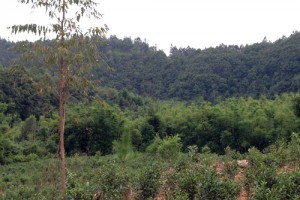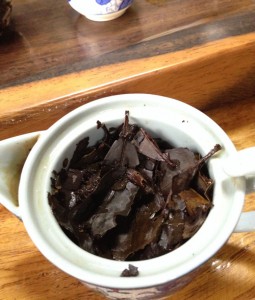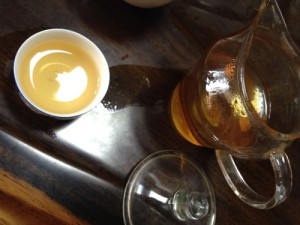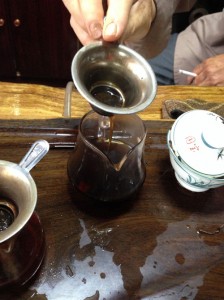Liubao Tea and the Old Granny
Every region in China has its own nomenclature for the big, thick 4th and 5th leaves on the tea plant. Puer drinkers most commonly refer to it as Huangpian. I am a champion of huangpian. In tea circles it doesn’t get enough respect. Well aged huangpian can be good in their own rite – sturdy and affordable.

On a recent trip to Liubao, Guangxi I encountered a different tea culture. The people of Liubao are staunch defenders of huangpian, which they call “Lao Cha Po” [ 老茶婆 ] literally translated this means “Old Tea Granny”. Laochapo was held in a spot of reverence. When I asked one Liubao-ite about his favorite tea, he immediately grabbed a handful of brittle orange laochapo and tossed it into a pot.

The tea was about 15 to 20 years old, although he said he could not pinpoint an exact date. The flavor was similar to brown buckwheat honey. Grainy and sweet. No arguments about the merits of this tea.


We also had a 3 year old Laochapo. It’s scent and flavor was reticent of freshly cut pumpkin meat. If you have ever made a jack-o-lantern and smelled the fresh pulp, this younger Laochapo had a similar flavor. The leaves seemed very lightly cooked and they were not rolled, so the leaves were not bruised as they usually are during the rounian [rolling] process of puer making.

During our session, a tea farmer entered his house to bring in a bag of old Laochapo. She had a bag of Laochapo that she claimed was 20 years old which she wanted to sell him. She said she was remodeling her house and found the bag stashed underneath floor boards. We were all greatly anticipating the tea, but after she opened the bag our hopes were dashed. The tea smelled like decaying fall leaves on a forest floor. The leaves were bug bitten and falling apart, revealing their veined structure. The seller smiled politely, even as he rebuked her offer saying something in Cantonese I couldn’t understand. He then looked at me and said, “This tea is filthy – nobody would drink this. Let’s brew it.” Lovely idea! Like when an older sibling takes a bite of the blue plate special liver and onions and snorts, “This is terrible…try a bite!”

Despite my better judgment, we brewed it up. Sure enough the tea yielded a disgusting pitch black tar. The smell was repugnant. PSA kids, store your tea well, or it will turn into the rotted leaves below. Protip: Do not put it underneath the floorboards for two decades, unattended.

Should you want to try some (none rotten!) Laochapo, you can buy online here.

